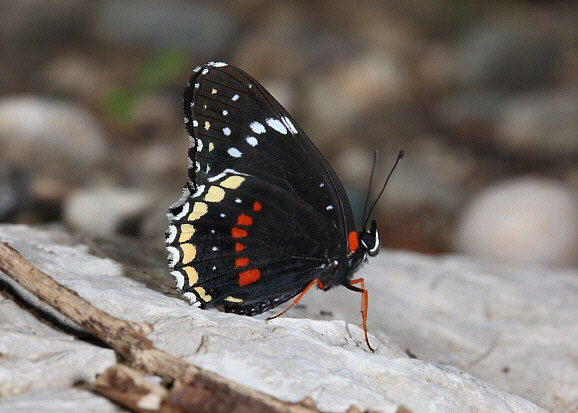
Introduction
The genus Chlosyne comprises of about 26 species, and is largely Central American in distribution, although there are several species which are found only in North America.
Most of the species have a black ground colour, and are marked with bands or patches of cream and reddish-orange, often in conjunction with a series of white spots in the post-median area of fore and hind wings. The legs of most species are orange. In all species the antennae are fairly short, straight, and end in a flattened club.
Chlosyne hippodrome is distributed from Mexico to Colombia.
Habitats
This species breeds in disturbed areas of deciduous woodland, including forest edge habitats, small meadows, orchards and clearings, at altitudes between sea level and about 1000m. The butterflies are generally more abundant in the vicinity of rivers and streams, particularly in the dry season.
Lifecycle
The eggs are pale green. They are laid in large batches on the underside of leaves of the foodplant.
When fully grown the caterpillars are black with white markings, and adorned with black spines. In the early instars they feed gregariously, but gradually become independent as they develop. They feed on Melanthera aspera ( Asteraceae ).
Adult behaviour
Males often settle on overhanging tree foliage along forest tracks. From this position they survey and intercept passing females. Males sometimes imbibe mineralised moisture from river edges, damp soil or cattle dung. Both sexes commonly nectar at a wide range of herbaceous plants, but strongly favour Asteraceae. They tend tend to fan their wings slowly while they feed.
